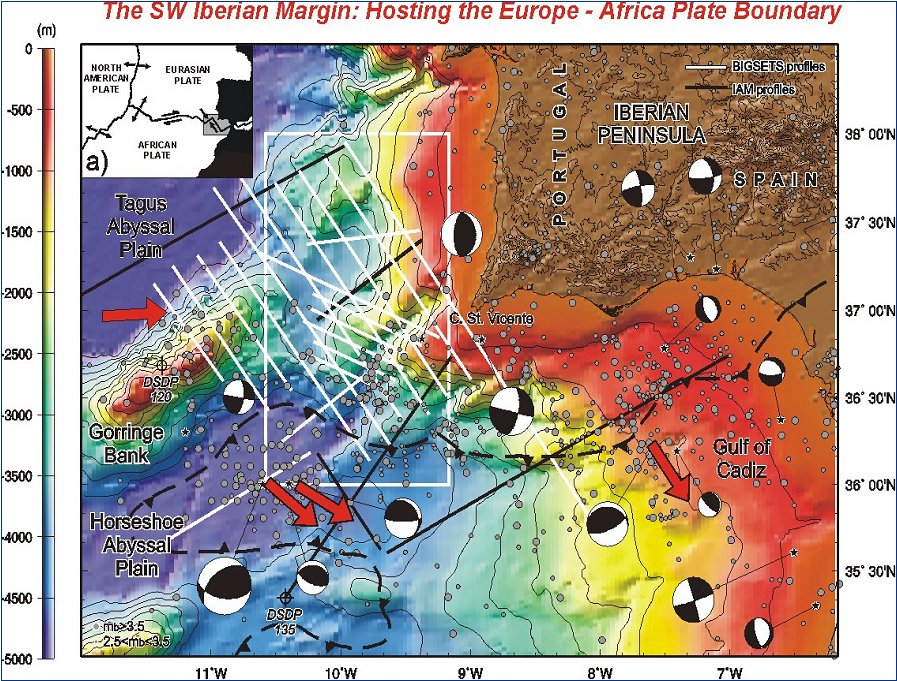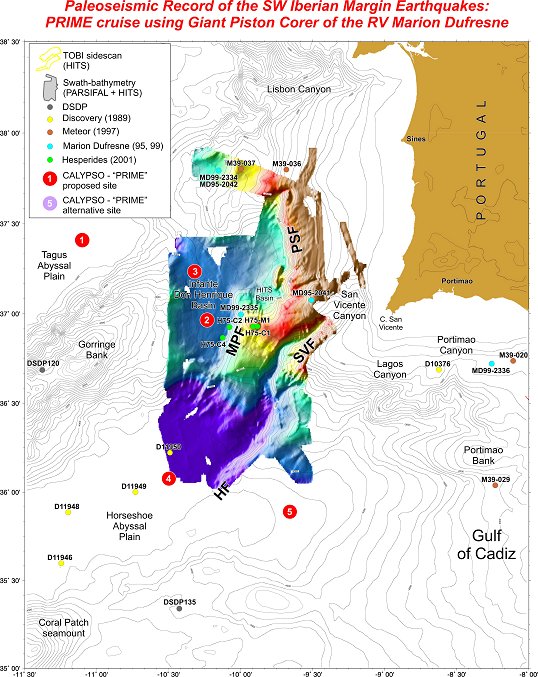Scientific Objectives:
the Iberian margin
Geodynamical context:
The SW Iberian margin is located along the Azores-Gibralter boundary between the Eurasia/Africa plate. It is the source of large earthquakes and tsunamis including the 1755 Lisbon earthquake (Mt = Mw = 8.5) in Europe and the 1969 Earthquake (Mw=8.0) on the Horseshoe Abyssal Plain. The Lisbon 1755 earthquake is the most catastrophic events known so far and it was felt as far as Britain and Finland. The earthquakes in this region were as a result of tectonic activity along Europe-Africa plate boundary which are converging at the rate of 4 mm/yr in the last 3 million years. The plate boundary on the area is diffused and focal mechanism shows a mixture of thrust and strike-slip motion (figure 1).

(figure E. Gracia)
Scientific objectives of the oceanographic campaign:
One of the most controversial issue in the area is the exact location of the earthquakes particularly 1755 Lisbon earthquake. Earlier campaigns (EV-BIGSETS and HITS spanish project) were devoided to study morphological features (landslides, fault scarp and lineaments), sedimentation (debris flows, turbidite etc) and seismic hazard assessments.
The main objective of the present PICABIA campaign in the Iberai/Africa plate margin is to carryout pleosesmological study of the SW Iberian margin. During CALYPSO-EU, four giant piston cores were acquired (figure 2). This will allow to unravel the Holocene earthquake event history of the SW Iberian Margin and their sedimentation. It will also allow calculating slip rate and recurrance rate, and thus help to refine the seismic risk assessment of the area. Similarly, the detail bathymetry carried out during the campaign will allow to identify seafloor surface rupture. In addition, detail bathymetry and multichannel imaging of the area will help locationing possible source of the earthquakes. TOBI sidescan sonar (3m resolution) will be used to study submarine landslides associated with the fault. The study will allow better constrain location, size, orientaion and displacement of the rupture that cause eathquakes including 1755 Lisbon earthquake.

(figure E. Gracia)


